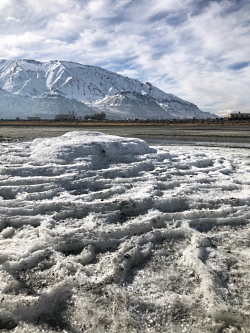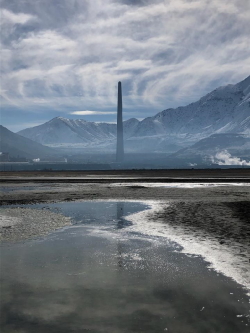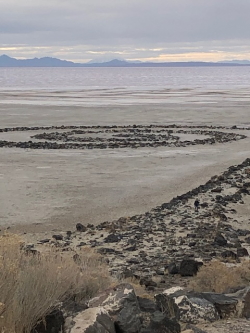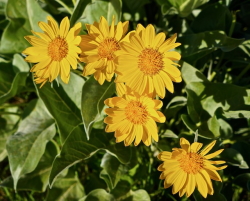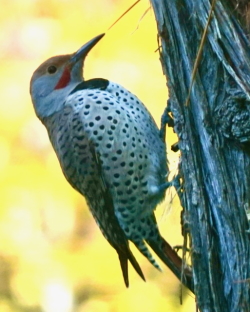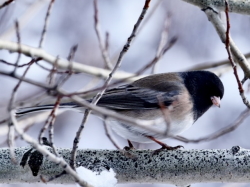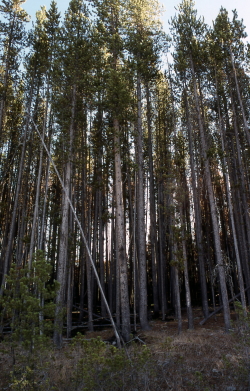
Yellowstone Collection
Courtesy US National Parks Service,
Bob Stevensoon, Photographer
October 27, 1988
When that happens, sometimes I’ll just go outside and pick something happening around me, or something I think of when outside and write about that. Sometimes or almost always, creativity for me is not clean-cut. It can be kinda formulaic: talk about things you see, feel, and think in a way that hopefully helps folks balance listening, their imagination, and hopefully hope all at the same time. It’s at least an ideal.
But sometimes instead what comes out when you’re outdoors, is stuff that is kinda dumb and pretty funny. Truth be told, I prefer dumb funny things. I think stuff that is funny is better than stuff that isn’t funny. Funny stuff is fun.
And so, here’s me sitting in a big gold puffy coat and well-napkined Carhartts in a foldable lawn chair under gray winter sky, and jack is happening around me. No birds tweeting. No fresh tracks. Not even no dim ray of sunshine. Just hands as cold as cold hands can be. Then I see a dead skyward and questionably lodgepole pine. I thought it could maybe have a second life as a flagpole, the name I thought it could be and all. And then I wondered…
If trees wove a flag
What color would they fly
Regardless I doubt they’d much care if it was green
Beings they’ve got no eyes
No eyes no ears no tongue no nose
Not even fully developed human hands which spring from their roots so
And then I thought…
If ducks could sing opera
Like dark Verdi arias
I think they’d quack less good
But dig in no less mud
No lips no fur lays eggs webbed toes
Brains like walnuts, only knows where south goes
And then…
If clouds could pick
What unit of measure that they preferred
I’d reckon volume’d be tricky
Be hard to pin down where the mass does now occur
No lungs no feet bring snow turns sleet
Don’t even got clocks to keep time.
And that’s where it ended. Stream ran Utah dry. And that’s ok.
And even though when I read what I wrote to my partner she gave me that look of, “you sure?” I couldn’t help but think, “yup!” so I laughed and smiled wide.
So here’s me saying to you that sometimes, when you go looking for inspiration about the world from that old all-about-us well that is the world, don’t turn up your nose on silly things. Funny things that pop into your mind, even if they are dumb. Because once, someone probably thought something wild and dumb that ended up being kind of neat. Or something that they thought about. And who knows, maybe one day we’ll have to ask ourselves again…
If trees wove a flag
What color would they fly?
Would they measure it in cubits,
Or some other unit from the sky?
I’m Patrick Kelly, and I’m Wild About Utah.
Credits:
Images: Image Courtesy US National Park Service, Yellowstone Collection, Bob Stevensoon, Photographer https://www.nps.gov/features/yell/slidefile/plants/conifers/pine/Page-3.htm
Audio: Contains audio Courtesy & Copyright Kevin Colver https://wildstore.wildsanctuary.com/collections/special-collections
Text: Patrick Kelly, Director of Education, Stokes Nature Center, https://logannature.org/
Included Links: Lyle Bingham, Webmaster, WildAboutUtah.org
Additional Reading
McNally, Catherine, How to Cure Writer’s Block: Go Green, Medium, October 7, 2019, https://medium.com/@catherine.mcnally/how-to-cure-writers-block-go-green-e0c00e8e614
Lodgepole Pine, Range Plants of Utah, Utah State University Extension, https://extension.usu.edu/rangeplants/shrubs-and-trees/LodgepolePine



